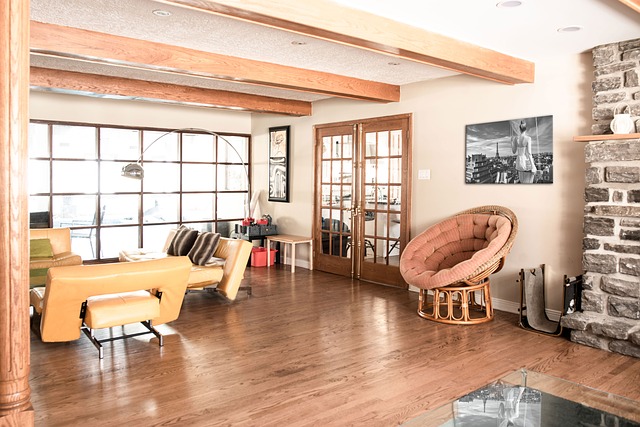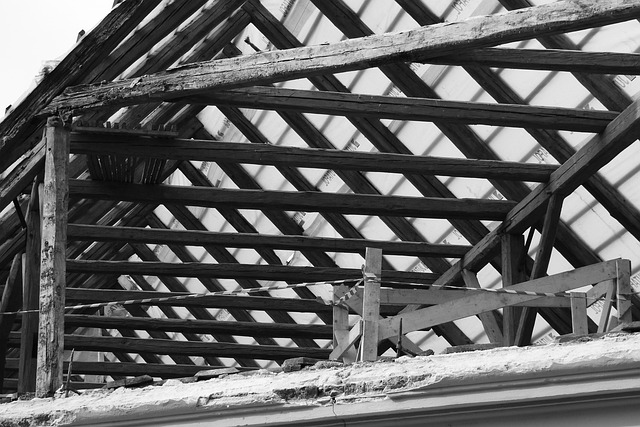Standard Sizes & Considerations for Glue Laminated Beam Dimensions

Glue laminated beams (glulams) come in various standard dimensions from 4×4 to 16×16 inches, with common sizes like 6" x 8", 8" x 10&qu…….
In the realm of construction and engineering, the concept of Glue Laminated Beam Dimensions (GLBD) has emerged as a game-changer, revolutionizing the way we design and build structures. This innovative technology involves the use of advanced glue bonding techniques to create high-performance structural elements, offering unparalleled strength and versatility. In this article, we embark on a journey to explore every facet of GLBD, from its fundamental principles to its global impact, economic implications, and future prospects. By delving into these aspects, readers will gain a comprehensive understanding of why GLBD is not just a passing trend but a crucial development in the industry.
Glue Laminated Beam Dimensions refer to the precise measurement and specifications of structural beams created through a specialized lamination process. This process involves layering multiple sheets or plies of wood (or other materials) and bonding them together using high-performance adhesives. The resulting structure is a robust, solid beam with exceptional mechanical properties.
The core components of a GLBD include:
Laminates: These are the individual layers of material, typically wood veneers or strands, that make up the beam. The choice and arrangement of these laminates determine the final properties of the product.
Adhesives: Specially formulated adhesives play a critical role in bonding the laminates together. Modern adhesives used in GLBD manufacturing offer superior strength, water resistance, and longevity.
Pressurized Curing: After lamination, the beams undergo a controlled curing process under pressure to ensure optimal bond strength between the layers.
The concept of glue laminating dates back to the early 20th century when engineers sought stronger and more durable construction materials. Traditional wood construction often relied on solid timber beams, but these had limitations in terms of strength and dimensional stability. The development of synthetic resins and improved adhesive technologies in the latter half of the century paved the way for GLBD.
Over time, advancements in manufacturing techniques and computer-aided design (CAD) software have enabled precise control over laminate orientation, thickness, and bonding patterns, leading to significant improvements in structural performance. Today, GLBD is widely recognized for its ability to provide consistent quality, reduce material waste, and enhance the overall strength of built environments.
Glue Laminated Beam Dimensions has gained global recognition and adoption due to its numerous advantages over traditional building methods. The international construction industry is witnessing a significant shift towards GLBD, particularly in regions with stringent building codes and a demand for energy-efficient structures. According to a recent market report, the global GLBD market size was valued at USD 5.2 billion in 2021 and is projected to grow at a CAGR of 6.5% from 2022 to 2030.
While North America and Europe have led the adoption of GLBD, Asia-Pacific is emerging as a significant market due to rapid urbanization and infrastructure development. Countries like China and India are investing heavily in modern construction technologies, including GLBD, to meet their growing demand for residential and commercial spaces.
In developing regions, GLBD offers a sustainable and cost-effective solution for constructing resilient buildings. As these areas continue to urbanize, the potential for GLBD to play a pivotal role in shaping their built environments is immense. Moreover, emerging technologies like 3D printing and advanced modeling software are expected to further revolutionize the way GLBD is designed and manufactured, opening up new possibilities for complex structural elements.
The market for GLBD is characterized by a mix of local manufacturers and global players. Established companies with a strong R&D focus dominate the scene, constantly innovating to meet evolving industry standards. The entry of new entrants, particularly those leveraging digital technologies, has intensified competition, driving down prices and improving product quality.
Investment in GLBD manufacturing facilities and research has been steady, reflecting the industry’s long-term growth potential. Governments worldwide are also recognizing the economic benefits of advanced construction materials, offering incentives for adopting GLBD in public infrastructure projects. This support is expected to accelerate market penetration and drive further investment.
While the initial capital costs of implementing GLBD can be higher than traditional methods, the long-term savings are significant. GLBD structures often have reduced maintenance requirements and longer lifespans, leading to substantial operational cost savings over time. Additionally, the ability to design complex structural forms with GLBD allows for more efficient space utilization, maximizing return on investment (ROI) in real estate development.
Technological advancements have played a pivotal role in enhancing GLBD manufacturing processes:
Digital Design and Modeling: Advanced CAD software enables engineers to create precise digital models of GLBD, facilitating better design optimization and material allocation. This reduces waste and improves overall structural efficiency.
Automated Lamination Pressing: The introduction of automated pressing machines has revolutionized lamination, ensuring consistent pressure distribution and faster production times while maintaining high-quality bonds.
Advanced Adhesive Formulations: Ongoing research in adhesive chemistry has led to the development of new adhesives with improved properties, including enhanced bond strength, moisture resistance, and fire retardancy.
The future of GLBD holds immense potential, especially in the realm of sustainable construction. Researchers are exploring ways to incorporate bio-based materials and recycled content into GLBD, reducing its environmental footprint. Additionally, the integration of smart technologies like sensors and IoT devices into GLBD structures is an emerging area of interest, enabling real-time monitoring and predictive maintenance.
The development and use of GLBD are subject to various policies and regulations worldwide, ensuring safety, quality, and sustainability. Key organizations involved in setting standards include:
American Society for Testing and Materials (ASTM): ASTM International develops and publishes technical standards for materials, including those related to GLBD manufacturing and performance.
International Organization for Standardization (ISO): ISO sets international standards for various aspects of GLBD, covering materials, testing methods, and quality control.
Regional Building Codes: Local authorities in different countries have their building codes and regulations, which often incorporate references to GLBD standards, ensuring compliance with specific performance requirements.
Stringent regulatory frameworks drive innovation in GLBD manufacturing, encouraging companies to adhere to higher quality and safety standards. This, in turn, fosters market competition and the development of more advanced products. Moreover, policy support for sustainable construction materials, such as those promoting the use of GLBD in green buildings, is driving industry growth and shaping future market trends.
Despite its numerous advantages, GLBD faces several technical challenges:
Material Delamination: Ensuring long-term adhesion between laminates remains a challenge, especially in extreme environmental conditions. Continuous research is focused on developing more robust adhesives and understanding delamination mechanisms.
Complex Design Constraints: While GLBD allows for intricate structural designs, translating these into manufacturable components can be challenging. Advanced modeling and simulation tools are helping engineers overcome this hurdle.
Criticisms regarding the environmental impact of GLBD manufacturing processes have prompted industry stakeholders to focus on sustainability. The main concerns include:
Adhesive Emissions: Some adhesives used in GLBD production emit volatile organic compounds (VOCs), raising environmental and health considerations. Researchers are developing low-VOC or water-based alternatives.
Material Sourcing: The reliance on forest resources for wood-based GLBD has led to sustainable sourcing and deforestation concerns. Using recycled materials and non-wood fibers is an ongoing area of exploration.
In urban centers like Tokyo, Japan, GLBD has been extensively used in the construction of high-rise residential buildings. The case study of the ‘Sky Tower’ project highlights several key aspects:
Design Innovation: The architect utilized GLBD to create a unique curved structure, providing panoramic views and optimizing interior space.
Cost Efficiency: Despite the complex design, GLBD allowed for faster construction and reduced material waste, resulting in significant cost savings.
Performance: The building has demonstrated exceptional structural integrity, with no reported issues since its completion five years ago.
In remote areas of Australia, where natural disasters are a concern, several schools have embraced GLBD for their resilience and sustainability features:
Wind and Earthquake Resistance: GLBD structures provide superior resistance to extreme weather events, ensuring safer learning environments.
Energy Efficiency: The insulative properties of GLBD contribute to reduced energy consumption, aligning with sustainable education goals.
Longevity: With proper maintenance, GLBD schools are expected to have longer operational lifespans than traditional constructions.
The future of GLBD holds immense promise across various sectors:
Residential Construction: As urbanization continues, GLBD will play a pivotal role in addressing the global housing crisis by enabling efficient, affordable, and sustainable homes.
Infrastructure Development: Public infrastructure projects worldwide are increasingly adopting GLBD for its strength, durability, and reduced maintenance requirements. Bridges, highways, and tunnels will benefit from these advanced structural elements.
Sustainable Architecture: The integration of bio-based materials and smart technologies into GLBD will contribute to the global push for sustainable architecture, reducing the carbon footprint of built environments.
For businesses and policymakers, several strategic considerations are essential:
Research and Development (R&D): Continued investment in R&D is crucial to overcoming technical challenges and developing new GLBD applications.
Global Collaboration: International partnerships can facilitate the exchange of knowledge and best practices, fostering innovation and ensuring consistent quality standards.
Policy Support: Governments should provide incentives and regulatory frameworks that encourage the adoption of GLBD in both residential and commercial projects.
Glue Laminated Beam Dimensions represents a significant leap forward in construction technology, offering unparalleled structural performance, design flexibility, and sustainability benefits. As the world grapples with the challenges of urbanization, climate change, and resource depletion, GLBD emerges as a vital tool for building resilient, efficient, and environmentally friendly structures.
Through this comprehensive analysis, we have explored the multifaceted aspects of GLBD, from its historical evolution to its global impact and future prospects. The article has highlighted the importance of understanding and embracing advanced construction materials like GLBD to shape a more sustainable built environment. As the industry continues to innovate, GLBD is poised to play an increasingly prominent role in defining the architectural landscape of tomorrow.
Q: What makes Glue Laminated Beam Dimensions (GLBD) unique?
A: GLBD stands out for its exceptional strength-to-weight ratio, superior structural integrity, and design versatility. It offers a sustainable alternative to traditional construction methods while providing cost savings and reduced maintenance over the lifespan of a building.
Q: How does GLBD contribute to sustainable construction?
A: GLBD promotes sustainability in several ways. It can be made from bio-based materials or recycled content, reducing reliance on virgin resources. Additionally, its superior energy efficiency and longer operational lifespan contribute to lower environmental impacts during the life cycle of a structure.
Q: Are there any safety concerns associated with GLBD?
A: As with any construction material, safety considerations exist. However, GLBD is designed to meet stringent performance standards, ensuring structural integrity and safety for occupants. Regular quality control measures and adherence to building codes further mitigate potential risks.
Q: Can GLBD be used in remote or challenging environments?
A: Absolutely. GLBD has been successfully employed in various extreme environments, including remote areas with harsh climates. Its resilience to wind, earthquakes, and other natural forces makes it a suitable choice for such locations, ensuring safer and more durable structures.
Q: How does the cost of GLBD compare to traditional building methods?
A: While the initial capital costs of GLBD can be higher, its long-term savings potential through reduced maintenance and operational costs make it a cost-effective option in many cases. Advanced manufacturing processes also minimize material waste, further contributing to cost efficiency.

Glue laminated beams (glulams) come in various standard dimensions from 4×4 to 16×16 inches, with common sizes like 6" x 8", 8" x 10&qu…….

Glue Laminated Beam Dimensions (GLulam) offer strength and versatility for DIY projects. Customizable, durable, and stable, GLulam minimizes warping a…….

Glue laminated beams (glulam) offer enhanced wood strength for heavy loads in buildings and bridges. Select dimensions from standard charts based on s…….

Understanding standard and non-standard Glue Laminated Beam Dimensions (glulam) is crucial for construction projects. Standardized beams simplify desi…….

Optimizing Glue Laminated Beam Dimensions (GLB) saves costs in construction. Proper sizing reduces waste and expenses while maintaining structural int…….

Custom glulam beam costs vary based on dimensions, material type, application, production methods, and features. Larger sizes and specialized finishes…….

Glulam beams, engineered from glued wood laminates, offer longer spans and reduced support needs compared to solid timber. Optimizing their dimensions…….

When selecting Glue Laminated Beams (GLulam) for construction, consider span length, load-bearing needs, and aesthetic preferences to ensure structura…….

Selecting optimal Glue Laminated Beam (GLulam) dimensions for roofing is crucial, balancing span length, load capacity, and architectural design. Stan…….

Commercial Grade Glue Laminated Beams offer robust, high-strength solutions for construction from residential to industrial projects. Select dimension…….